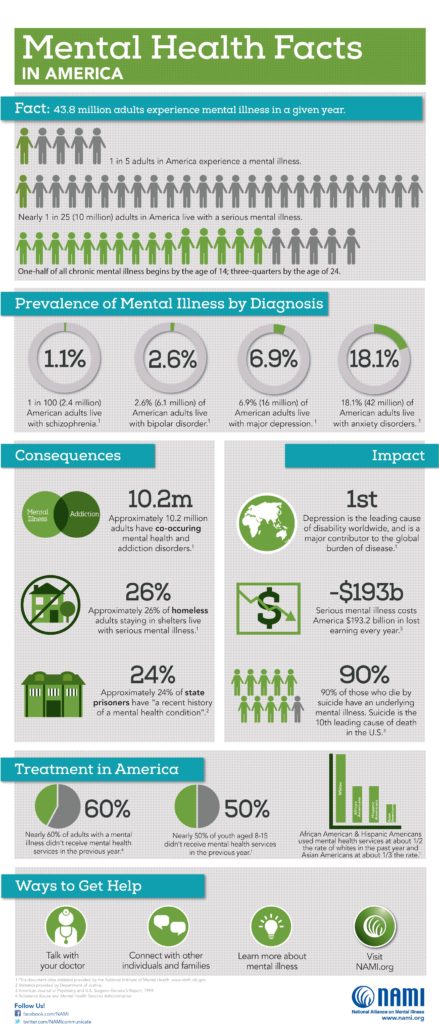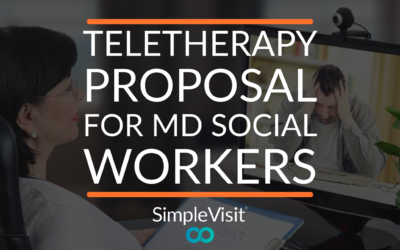
Mental Health and Telemedicine
Even though Mental Health Awareness Month has come to a close, it is still very important to continue the discussion around the seriousness of mental illness, the effects it has on individuals, and effective ways to help those suffering. Individuals with mental illnesses, if treated properly, can lead normal lives. Yet the stigma surrounding mental health issues along with limits in location, as well as financial or health resources are common reasons why many people struggle to receive the necessary treatment. Telemedicine has been used more and more recently to help break those barriers to care. Not only does telemedicine lower costs to the patient, it will help providers increase access to their patients in need.
 What is Mental illness and what are the effects?
What is Mental illness and what are the effects?
Mental illness is any condition that affects the way an individual thinks, feels, behaves or relates to their surroundings. These conditions come in many forms including depression, anxiety disorders, bipolar disorder, etc. and can have a huge impact on those suffering. Mental illness is a serious ailment that affects about 1 in 5 Americans, which equals around 40 million people. This is an alarming number, but it should be noted that these conditions aren’t the patient’s fault. In fact, mental illnesses usually stem from genetics, biological make up, psychological trauma, or environmental stressors. While these conditions may not necessarily be preventable, they can be treated.
According to a recent report, only 35 percent of adults with a mental illness are getting help. An untreated illness can cause a great deal off harm. Increased classroom absence or dropouts, strained and destructive relationships, negative job performance, substance abuse, homelessness, even incarceration or suicide are all potential results of untreated mental illness. It is because of these unfortunate outcomes that mental illnesses and their treatments must be taken seriously.
Process and importance of treatment
Early detection and treatment of mental illnesses are imperative and instrumental in how the lives of the patient improve. While over 60% of those with a mental illness aren’t seeking treatment, many live without incident if they are treated effectively and efficiently. A behavioral health provider will usually speak with the individual about their symptoms to determine origins and affect. If necessary, there may be a physical exam to ensure that there are no further health problems. The provider then gives a diagnosis and develops a treatment plan of either therapy and/or medication while monitoring the patient’s symptoms to ensure effectiveness. Without treatment, a mental illness can negatively influence the life of and those around the individual suffering. However, with all of these steps in place, a patient can live a functioning and “normal” life with a mental illness.
Barriers to treatment
For many individuals the process for mental health treatment is not always as simple. There are millions of mental illness cases in the United States alone being treated by the current selection of specialists. Access and quality of treatment is often hindered for high-need patients by barriers such as poverty, lack of insurance coverage, challenges in transportation from rural or urban areas, homelessness or incarceration. In some cases, there is a lack of motivation, trust, or intimidation around accepting a mental illness. Because of these barriers, there are about 15-20% of patients end up as no-shows for their appointments. This number must decrease to ensure the mental well-being of our communities.
How Telemedicine can help
Telemedicine empowers behavioral health providers in the U.S. and beyond to treat the millions of patients they might not have access to otherwise. This access to care using video over the internet can significantly decrease no-shows. Patients affected by some of the barriers mentioned have increased accountability with treatment through telemedicine.
By using a telemedicine solution, Behavioral Health providers increase access to low population, low income areas, even correctional facilities. Telemedicine can increase the privacy of treatment for the sake of the patient by allowing them to choose the comfort of familiar surroundings. This type of care can eliminate travel times and expenses while improving time efficiency for both the patient and provider; resulting in fewer sick days, disability claims and increased job stability for the patients. Virtual appointments also empower the providers to reach more individuals with a mental illness and monitor them closely, without the usual strain of an in-person visit. Telemedicine services such as SimpleVisit connect patients and providers with a direct video call; further reducing the barriers to treatment by limiting the requirements of accessing care to only answering a call.
Advancements in technology continue to help behavioral health providers, psychologists, psychiatrists, and social workers care for those in our families and communities in need of mental health care. Ensuring that patients have access to the care they need can be answered with telemedicine services like SimpleVisit. Learn more about how to use these services for your practice at SimpleVisit.com or speak with a telemedicine specialist at 877.838.4748.
About SimpleVisit
SimpleVisit is a video service which allows patients and providers to connect over the video platform of their choice. With SimpleVisit providers are able to deliver on-demand visits to patients over any device or platform they have available to them. For more information on SimpleVisit and on how we are enabling providers to host virtual visits check out www.SimpleVisit.com
ATA: State of the States 2019 Report
Industry Update | July 31, 2019The American Telemedicine Association (ATA) has recently released one of the most comprehensive surveys of legislation and reimbursement for telehealth services in the nation… and reveals an encouraging glimpse of the future. The ATA is...
Experience Telehealth: Learn the Language
By Allie Clark | 8 min read | July 25, 2019[Part 1 of 3] Learning the Language of Telehealth There is a foundation for healthcare that transcends any specific medical field, location or tools used for care. That foundation is hope. Hope in better outcomes for a...
Teletherapy Proposal for MD Social Workers
Maryland Deliberates Over Adding Social Work Clinicians to the List of Telehealth-Eligible Providers The field of teletherapy is rapidly expanding and is positioned to be the area of virtual care with the most widespread and consistent patient engagement, physician...



